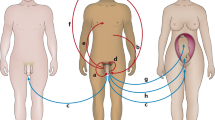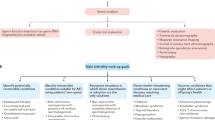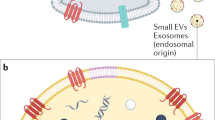Abstract
Recent in vitro studies have shown that some chemical UV filters mimic the effect of progesterone in the activation of the CatSper Ca2+ channel in human spermatozoa. However, so far, the extent of exposure of human spermatozoa to chemical UV filters via the presence of these chemicals in seminal fluid has been unknown. Here, we present levels of UV filters measured in human seminal fluid and comparisons to levels measured in concurrently collected urine and serum samples. In total nine UV filters were analysed by TurboFlow-LC–MS/MS in paired urine, serum, and seminal fluid samples from 300 young Danish men from the general population; each man collected one of each sample type within 1 h. The samples were collected during February–December 2013 and only six of the men reported having used sunscreen during the 48 h preceding the sample collection. Four of the examined UV filters could be detected in seminal fluid samples at levels above LOD in more than 10% of the samples. Benzophenone (BP), benzophenone-1 (BP-1), and benzophenone-3 (BP-3) were most frequently detected in, respectively, 18%, 19%, and 27% of the seminal fluid samples albeit at levels one to two orders of magnitude lower than the levels observed in urine. 4-methyl-benzophenone (4-MBP) was detectable in 11% of the seminal fluid samples while in <5% of the urine samples. Overall 45% of the men had at least one of the UV filters present in their seminal fluid at detectable levels. For BP-1 and BP-3 individual levels in urine and seminal fluid were significantly correlated, while this was not evident for BP nor 4-MBP. In conclusion, chemical UV filters are present in men’s seminal fluid; some of which can activate the human sperm-specific CatSper Ca2+ channel and thereby potentially interfere with the fertilisation process.
This is a preview of subscription content, access via your institution
Access options
Subscribe to this journal
Receive 6 print issues and online access
$259.00 per year
only $43.17 per issue
Buy this article
- Purchase on Springer Link
- Instant access to full article PDF
Prices may be subject to local taxes which are calculated during checkout


Similar content being viewed by others
References
Krause M, Klit A, Blomberg Jensen M, Soeborg T, Frederiksen H, Schlumpf M, et al. Sunscreens: are they beneficial for health? An overview of endocrine disrupting properties of UV-filters. Int J Androl. 2012;35:424–36.
Kunz PY, Fent K. Multiple hormonal activities of UV filters and comparison of in vivo and in vitro estrogenic activity of ethyl-4-aminobenzoate in fish. Aquat Toxicol. 2006;79:305–24.
Schlumpf M, Durrer S, Faass O, Ehnes C, Fuetsch M, Gaille C, et al. Developmental toxicity of UV filters and environmental exposure: a review. Int J Androl. 2008;31:144–51.
Kim S, Choi K. Occurrences, toxicities, and ecological risks of benzophenone-3, a common component of organic sunscreen products: a mini-review. Environ Int. 2014;70:143–57.
Watanabe Y, Kojima H, Takeuchi S, Uramaru N, Sanoh S, Sugihara K, et al. Metabolism of UV-filter benzophenone-3 by rat and human liver microsomes and its effect on endocrine-disrupting activity. Toxicol Appl Pharmacol. 2015;282:119–28.
Kinnberg KL, Petersen GI, Albrektsen M, Minghlani M, Awad SM, Holbech BF, et al. Endocrine-disrupting effect of the ultraviolet filter benzophenone-3 in zebrafish, Danio rerio. EnvironToxicol Chem. 2015;34:2833–40.
Nakamura N, Inselman AL, White GA, Chang CW, Trbojevich RA, Sephr E, et al. Effects of maternal and lactational exposure to 2-hydroxy-4-methoxybenzone on development and reproductive organs in male and female rat offspring. Birth Defects Res B Dev Reprod Toxicol. 2015;104:35–51.
Hoshino N, Tani E, Wako Y, Takahashi K. A two-generation reproductive toxicity study of benzophenone in rats. J Toxicol Sci. 2005;30:5–20.
Jeon HK, Sarma SN, Kim YJ, Ryu JC. Toxicokinetics and metabolisms of benzophenone-type UV filters in rats. Toxicology. 2008;248:89–95.
Rehfeld A, Dissing S, Skakkebaek NE. Chemical UV filters mimic the effect of progesterone on Ca(2+) signaling in human sperm cells. Endocrinology. 2016;157:4297–308.
Rehfeld A, Egeberg DL, Almstrup K, Petersen JH, Dissing S, Skakkebaek NE. EDC IMPACT: chemical UV filters can affect human sperm function in a progesterone-like manner. Endocr Connect. 2018;7:16–25.
Schiffer C, Muller A, Egeberg DL, Alvarez L, Brenker C, Rehfeld A, et al. Direct action of endocrine disrupting chemicals on human sperm. EMBO Rep. 2014;15:758–65.
Publicover S, Harper CV, Barratt C. [Ca2+]i signalling in sperm–making the most of what you’ve got. Nat Cell Biol. 2007;9:235–42.
Williams HL, Mansell S, Alasmari W, Brown SG, Wilson SM, Sutton KA, et al. Specific loss of CatSper function is sufficient to compromise fertilizing capacity of human spermatozoa. Hum Reprod. 2015;30:2737–46.
Hildebrand MS, Avenarius MR, Fellous M, Zhang Y, Meyer NC, Auer J, et al. Genetic male infertility and mutation of CATSPER ion channels. Eur J Hum Genet. 2010;18:1178–84.
Avenarius MR, Hildebrand MS, Zhang Y, Meyer NC, Smith LL, Kahrizi K, et al. Human male infertility caused by mutations in the CATSPER1 channel protein. Am J Hum Genet. 2009;84:505–10.
Buck Louis GM, Kannan K, Sapra KJ, Maisog J, Sundaram R. Urinary concentrations of benzophenone-type ultraviolet radiation filters and couples’ fecundity. Am J Epidemiol. 2014;180:1168–75.
Bae J, Kim S, Kannan K, Buck Louis GM. Couples’ urinary concentrations of benzophenone-type ultraviolet filters and the secondary sex ratio. Sci Total Environ. 2016;543:28–36.
Buck Louis GM, Chen Z, Kim S, Sapra KJ, Bae J, Kannan K. Urinary concentrations of benzophenone-type ultraviolet light filters and semen quality. Fertil Steril. 2015;104:989–96.
Adoamnei E, Mendiola J, Monino-Garcia M, Vela-Soria F, Iribarne-Duran LM, Fernandez MF, et al. Urinary concentrations of benzophenone-type ultra violet light filters and reproductive parameters in young men. Int J Hyg Environ Health. 2018;221:531–40.
Chung MK, Buck Louis GM, Kannan K, Patel CJ. Exposome-wide association study of semen quality: systematic discovery of endocrine disrupting chemical biomarkers in fertility require large sample sizes. Environ Int. 2019;125:505–14.
Kunisue T, Chen Z, Buck Louis GM, Sundaram R, Hediger ML, Sun L, et al. Urinary concentrations of benzophenone-type UV filters in U.S. women and their association with endometriosis. Environ Sci Technol. 2012;46:4624–32.
Pollack AZ, Mumford SL, Krall JR, Carmichael AE, Sjaarda LA, Perkins NJ, et al. Exposure to bisphenol A, chlorophenols, benzophenones, and parabens in relation to reproductive hormones in healthy women: a chemical mixture approach. Environ Int. 2018;120:137–44.
Janjua NR, Kongshoj B, Andersson AM, Wulf HC. Sunscreens in human plasma and urine after repeated whole-body topical application. J Eur Acad Dermatol Venereol. 2008;22:456–61.
Langford KH, Reid MJ, Fjeld E, Oxnevad S, Thomas KV. Environmental occurrence and risk of organic UV filters and stabilizers in multiple matrices in Norway. Environ Int. 2015;80:1–7.
Schlumpf M, Kypke K, Wittassek M, Angerer J, Mascher H, Mascher D, et al. Exposure patterns of UV filters, fragrances, parabens, phthalates, organochlor pesticides, PBDEs, and PCBs in human milk: correlation of UV filters with use of cosmetics. Chemosphere. 2010;81:1171–83.
Morrison GC, Beko G, Weschler CJ, Schripp T, Salthammer T, Hill J, et al. Dermal uptake of benzophenone-3 from clothing. Environ Sci Technol. 2017;51:11371–9.
Wan Y, Xue J, Kannan K. Occurrence of benzophenone-3 in indoor air from Albany, New York, USA, and its implications for inhalation exposure. Sci Total Environ. 2015;537:304–8.
Frederiksen H, Jensen TK, Jorgensen N, Kyhl HB, Husby S, Skakkebaek NE, et al. Human urinary excretion of non-persistent environmental chemicals: an overview of Danish data collected between 2006 and 2012. Reproduction. 2014;147:555–65.
Moos RK, Angerer J, Wittsiepe J, Wilhelm M, Bruning T, Koch HM. Rapid determination of nine parabens and seven other environmental phenols in urine samples of German children and adults. Int J Hyg Environ Health. 2014;217:845–53.
Wang L, Kannan K. Characteristic profiles of benzonphenone-3 and its derivatives in urine of children and adults from the United States and China. Environ Sci Technol. 2013;47:12532–8.
Zhang T, Sun H, Qin X, Wu Q, Zhang Y, Ma J, et al. Benzophenone-type UV filters in urine and blood from children, adults, and pregnant women in China: partitioning between blood and urine as well as maternal and fetal cord blood. Sci Total Environ. 2013;461–462:49–55.
Lu S, Long F, Lu P, Lei B, Jiang Z, Liu G, et al. Benzophenone-UV filters in personal care products and urine of schoolchildren from Shenzhen, China: Exposure assessment and possible source. Sci Total Environ. 2018;640-641:1214–20.
Centers for Disease Control and Prevention (CDC). Fourth National report on Human Exposure to Environmental Chemicals, Updated tables, 2019. https://www.cdc.gov/exposurereport/pdf/FourthReport_UpdatedTables_Volume1_Jan2019-508.pdf.
Jorgensen N, Joensen UN, Jensen TK, Jensen MB, Almstrup K, Olesen IA, et al. Human semen quality in the new millennium: a prospective cross-sectional population-based study of 4867 men. BMJ Open. 2012;2:e000990. (p. 1–13).
Frederiksen H, Nielsen O, Skakkebaek NE, Juul A, Andersson AM. UV filters analyzed by isotope diluted TurboFlow-LC-MS/MS in urine from Danish children and adolescents. Int J Hyg Environ Health. 2017;220:244–53.
Krause M, Frederiksen H, Sundberg K, Jorgensen FS, Jensen LN, Norgaard P, et al. Presence of benzophenones commonly used as UV filters and absorbers in paired maternal and fetal samples. Environ Int. 2018;110:51–60.
Middleton DR, Watts MJ, Lark RM, Milne CJ, Polya DA. Assessing urinary flow rate, creatinine, osmolality and other hydration adjustment methods for urinary biomonitoring using NHANES arsenic, iodine, lead and cadmium data. Environ Health. 2016;15:68.
Joensen UN, Frederiksen H, Blomberg Jensen M, Lauritsen MP, Olesen IA, Lassen TH, et al. Phthalate excretion pattern and testicular function: a study of 881 healthy Danish men. Environ Health Perspect. 2012;120:1397–403.
Wang L, Asimakopoulos AG, Moon HB, Nakata H, Kannan K. Benzotriazole, benzothiazole, and benzophenone compounds in indoor dust from the United States and East Asian countries. Environ Sci Technol. 2013;47:4752–9.
Brenker C, Rehfeld A, Schiffer C, Kierzek M, Kaupp UB, Skakkebaek NE, et al. Synergistic activation of CatSper Ca2+ channels in human sperm by oviductal ligands and endocrine disrupting chemicals. Hum Reprod. 2018;33:1915–23.
Buck Louis GM, Barr DB, Kannan K, Chen Z, Kim S, Sundaram R. Paternal exposures to environmental chemicals and time-to-pregnancy: overview of results from the LIFE study. Andrology. 2016;4:639–47.
Schlecht C, Klammer H, Frauendorf H, Wuttke W, Jarry H. Pharmacokinetics and metabolism of benzophenone 2 in the rat. Toxicology. 2008;245:11–7.
Nakagawa Y, Suzuki T, Tayama S. Metabolism and toxicity of benzophenone in isolated rat hepatocytes and estrogenic activity of its metabolites in MCF-7 cells. Toxicology. 2000;156:27–36.
Okereke CS, Abdel-Rhaman MS, Friedman MA. Disposition of benzophenone-3 after dermal administration in male rats. Toxicol Lett. 1994;73:113–22.
Kadry AM, Okereke CS, Abdel-Rahman MS, Friedman MA, Davis RA. Pharmacokinetics of benzophenone-3 after oral exposure in male rats. J Appl Toxicol. 1995;15:97–102.
International agency for research on cancer (IARC). Some chemicals present in industrial and consumer products, food and drinking-water. In: IARC monographs on the evaluation of carcinogenic risks to humans volume 101, 2012. https://publications.iarc.fr/125.
Ito R, Kawaguchi M, Koganei Y, Honda H, Okanouchi N, Sakui N, et al. Development of miniaturized hollow-fiber assisted liquid-phase microextraction with in situ acyl derivatization followed by GC-MS for the determination of benzophenones in human urine samples. Anal Sci. 2009;25:1033–7.
Kawaguchi M, Ito R, Honda H, Koganei Y, Okanouchi N, Saito K, et al. Miniaturized hollow fiber assisted liquid-phase microextraction and gas chromatography-mass spectrometry for determination of benzophenone and derivates in human urine sample. J Chromatogr B Anal Technol Biomed Life Sci. 2009;877:298–302.
Acknowledgements
This project was supported by the Danish Environmental Protection Agency (j.nr.MST-621-00148) as a project under Centre on Endocrine Disrupters (http://www.cend.dk). We would like to thank the young men participating and the staff involved in different parts of the project including the recoupment procedures, physical examinations, collection, and analysis of samples.
Author information
Authors and Affiliations
Corresponding author
Ethics declarations
Conflict of interest
The authors declare that they have no conflict of interest.
Additional information
Publisher’s note Springer Nature remains neutral with regard to jurisdictional claims in published maps and institutional affiliations.
Rights and permissions
About this article
Cite this article
Frederiksen, H., Krause, M., Jørgensen, N. et al. UV filters in matched seminal fluid-, urine-, and serum samples from young men. J Expo Sci Environ Epidemiol 31, 345–355 (2021). https://doi.org/10.1038/s41370-020-0209-3
Received:
Revised:
Accepted:
Published:
Issue Date:
DOI: https://doi.org/10.1038/s41370-020-0209-3
Keywords
This article is cited by
-
UV filters in everyday cosmetic products, a comparative study
Environmental Science and Pollution Research (2023)
-
Advanced harmonization techniques result in accurate establishment of in vitro–in vivo correlations for oxybenzone from four complex dermal formulations with reapplication
Drug Delivery and Translational Research (2023)
-
Environmental factors in declining human fertility
Nature Reviews Endocrinology (2022)
-
Environmental contamination status with common ingredients of household and personal care products exhibiting endocrine-disrupting potential
Environmental Science and Pollution Research (2022)



